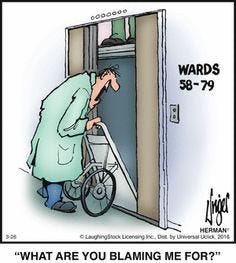Who's to Blame?
Look to Your System First, People Second.
"I should estimate that in my experience most troubles and most possibilities for improvement add up to proportions something like this : 94% belong to the system (responsibility of management) 6% special"
“Bill,” I asked of the manager of a company engaged in motor freight, “how much of this trouble [shortage and damage] is the fault of the drivers?” His reply, “All of it,” was a guarantee that this level of loss will continue until he learns that the main causes of trouble belong to the system, which is for Bill to work on."
- W. E. Deming, Out of the Crisis, p. 315.“No amount of care or skill in workmanship can overcome fundamental faults of the system.”
- W.E. Deming, The New Economics 3rd Ed., p. 24.
If you come away from these posts with only a single impression of what it means to lead with a “systems view” guided by Dr. Deming’s theories and teachings let it be this: Blame your systems and processes for problems before you blame the people working within them. Put another way: Your system is perfectly designed to obtain the results you’re seeing.
You, your colleagues, and your employees can only achieve to the extent that your systems or processes will allow. Improvement of results will not come through inducing people to work harder or faster but through changes to the containing system. As noted consultant Peter Scholtes observed in his 1998 book, The Leader’s Handbook, “Changing the system will change what people do. Changing what people do will not change the system.”
Compare and contrast this with what we see practiced under the prevailing style of management today: Do we blame people or systems? Do we try to fix people or systems? What approach do transformations tend to favour? How do you know?
With respect to how fault is distributed for problems and issues, you may be curious what led Dr. Deming to specifically use the figures 94% and 6% . Dr. Henry Neave, an associate of Deming’s, offers these insights in his book, The Deming Dimension (1992), pp. 68-69:
Dr. Joseph Juran estimated many years ago that no more than 15% of the problems (or opportunities for improvement) in an organization are due to special causes (ie possibly, but not exclusively, the province of workers), leaving management with the responsibility for at least 85% of potential improvement through changes on the system within which their employees are obliged to labour.
After quoting these figures for many years, Dr. Deming revised them in 1985 to 6% and 94% respectively.
Footnote: I have recently heard it rumoured that the figures have been updated again - this time to 2% and 98%!
Thus, these figures are intended as a heuristic based on empirical observations rather than precise, scientifically deduced figures. Within your organization, you may find the distribution slightly better or worse depending on your situation.
For some extra credit fun, let’s go back to our hapless orderly in the above cartoon who has made an obvious lapse in judgement. Who’s at fault? Why? What recommendations would you make to the management team for the hospital?



